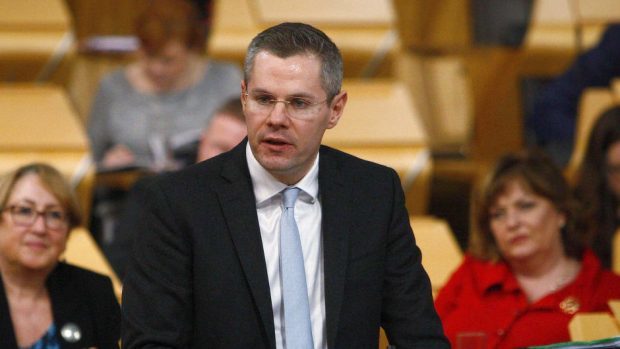It’s that time of year again – and I don’t mean the post-Halloween rush to Christmas.
No, the fiscal season is upon us.
We’ve just had the Budget delivered courtesy of Philip Hammond and are in the midst of the fallout over whether it’s good, bad or indifferent for the economy, whether it was a clever trap which will force Labour into supporting tax cuts for the wealthy, or indeed whether there was any point in it anyway given Brexit will throw out the bath, baby and all bathing accoutrements with the bathwater come March next year. And to think there was a time when all people wanted to know was if the price of cigarettes and beer was going up.
The UK budget also heralds the start of the countdown to its Scottish counterpart.
For the next few weeks there will be little more occupying the minds of our political leaders – and economic think tanks – than the draft budget which the Finance Secretary, Derek Mackay, will publish at some point during the last few weeks of December. Yes, at this very moment civil servant elves are desperately trying to find the fairy dust that will transform the taxation arguments about to be trotted out in defence of Mackay’s decisions, into something shiny and new for Christmas.
But if money is the root of all evil, then tax and spend is the twisted trunk around which our political system is entwined. The same old back and forth about whether we should raise more tax to spend more on public services – or leave money in people’s pay packets – has been going on since time began. But it has ratcheted up in the last two decades.
The devolution referendum back in 1997 baldly asked the question whether the Scottish Parliament should have tax varying powers, should a Yes vote see it reconvened. Even then there were fears that giving Holyrood the ability to raise its own money would result in some kind of hedonistic spending spree on jotters and bed pans, or three-for-two deals on new motorways.
Laughable isn’t it, given the Aberdeen bypass was approved 15 years ago and still isn’t complete.
Yet, the Labour and LibDem coalition governments of the Parliament’s first eight years of existence didn’t feel the need to do anything different on tax, happy to rely on the increased funding coming Scotland’s way through the Barnett formula given the then Labour government’s spending south of the border. The SNP government of 2007 also baulked at varying tax by 3p in the pound, still wary after their campaign of a Penny for Scotland failed to win them the 1999 Scottish Parliament election.
The financial crash of 2008 and the ongoing austerity agenda of successive Conservative governments should have changed all of that. Yet still the Scottish Government did nothing. It took a No vote at the independence referendum and the Smith Commission recommending devolving greater powers over income tax to Holyrood for anything to change.
So last year, for the first time ever, Scottish income tax rates varied from those in the rest of the UK. Which typically prompted an attack from both sides of the political spectrum: either they didn’t do go far enough or they had undermined Scotland’s economy.
So what will Derek Mackay do this year? Philip Hammond’s budget will see Scotland receive an extra £950million on Barnett consequentials over the next three years – the vast majority of that, around £550million, likely to go straight to cash-strapped NHS boards across the country. As for the rest, well Mr Mackay can choose to do what he likes, but there will be a long queue of deserving applicants.
Local government will not be shy in demanding its share after millions have been slashed from budgets, and tens of thousands of staff “disappeared” from the payroll with education, social work, even bin collection all suffering. Teachers too, just out demonstrating for a pay rise last weekend, will rightly expect a little largesse. And what about the Scottish WASPI women, whom the government is so keen to support? Can they expect to see some of the warm words become cold hard cash? The Parliament has the power to do something concrete for them – now it has the money too.
And then there are the higher rate taxpayers who might have understood why they were paying more tax last year, but in the light of extra cash coming to Scotland may well think differently now. So will the Finance Secretary pass on Mr Hammond’s tax cut – he has raised the 40 per cent tax rate to £50,000. After all if he does nothing but raise the higher threshold by inflation, that would mean people in Scotland earning £50k paying £1,100 more in tax than those in England and Wales. And many of them will be SNP voters
What’s for certain, is that while Derek Mackay will undoubtedly state that there have been cuts to the Scottish budget by Westminster over the last austere decade, he cannot deny he now has more money to play with from the UK government. Hammond is hardly Santa, but Mackay now has to prove he is not the Grinch.
Gina Davidson is an award-winning journalist and a media and communications specialist.











